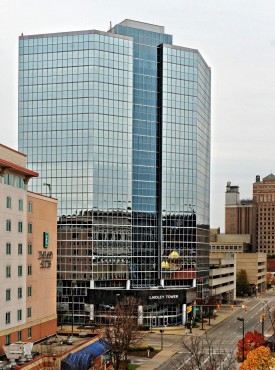
According to a recent real estate survey, Charleston’s six “Class A” office spaces, among the most modern downtown, are reporting the highest rate of vacancy in at least 15 years. The broker conducting the survey said the accelerating departure of coal and natural gas companies from the area has taken a toll on occupancy rates.
CHARLESTON, W.Va. — A continued exodus of coal and natural gas firms has caused vacancies in Charleston’s main commercial office towers to surge to the highest level in well over a decade.
The city’s six “Class A” office buildings — Chase Tower, BB&T Square, Huntington Square, Laidley Tower, the United Center and the new MVB Bank building — saw their overall vacancy rate spike to 16.2 percent in November, according to the latest market survey by commercial real estate broker Howard Swint. That was up sharply from the 10 percent rate Swint’s survey recorded in April and could be one of the highest vacancy rates ever for Charleston’s downtown office space.
“This is the highest vacancy rate since I’ve been tracking market conditions in downtown Charleston, which has been about 15 years,” Swint said.
The city’s six Class A buildings have a total of 989,462 lease-able square feet. Of that, 161,240 square feet is currently vacant and open for new tenants. That’s up from the 95,914 square feet of vacant space available in April.
Class A buildings are typically more modern, with on-site parking and security and located in the heart of a city’s business district. Another class, Class B, consists of properties in smaller, older buildings, similar to those along Capitol, Quarrier and Virginia streets, that may not have on-site parking or other amenities.
The current 16.2 percent vacancy rate is higher than the 13 percent rate Swint’s survey recorded in February 2010, after the Great Recession had taken its toll on the local economy.
The sharp increase in vacancies also comes less than two years after the city’s Class A market was at what Swint called “effective full occupancy…




